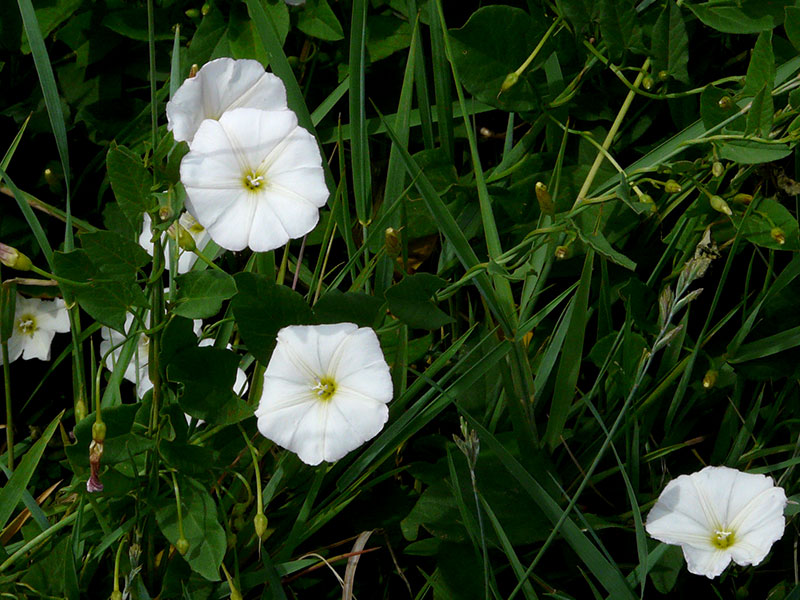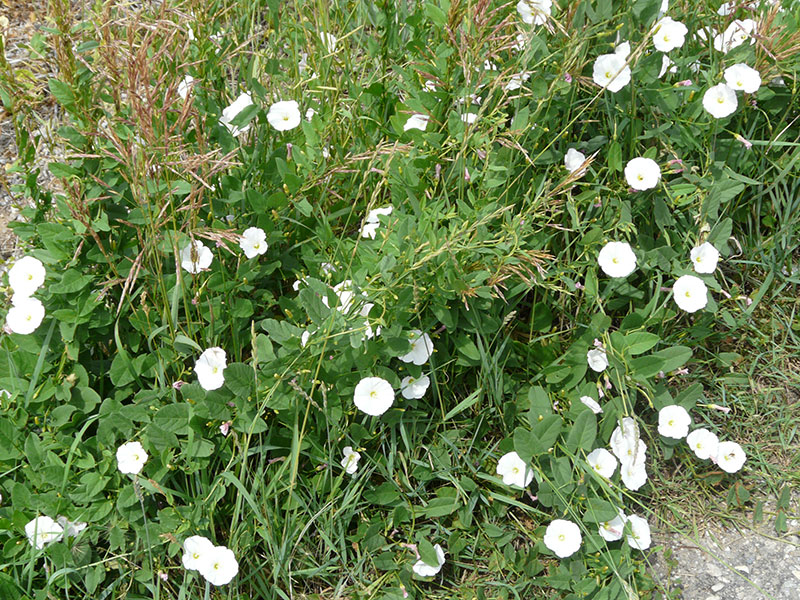Convulvulus arvensis / field bindweed
- prostrate and twining vine with white “morning-glory” flowers
- may be so dense as to choke out other plants
- roadsides, agricultural fields, waste areas
- “noxious” in Idaho
Also known as: withy wind, perennial morning glory, smallflowered morning glory, creeping jenny, possession vine.
Field bindweed is easily recognizable whether or not it is in flower. In its vegetative state, it is a prostrate vine that crawls across the ground until it can wind around other plants for support. In case it matters, it twines in a counterclockwise direction. Because of its ability to completely crowd out its hosts this way, it has been designated a noxious weed in Idaho. It first appeared in the US in 1739, and in 1955, was in every county in Idaho, occupying 140,000 acres.
In flower, field bindweed is even easier to spot. The flowers are an inch or so across, trumpet or funnel shaped and white, and they suddenly pop up, nearly at ground level, covering the other plants you thought were there. Flowering occurs in mid-summer.
Field bindweed is a perennial, rhizomatous non-native weed in in the morning-glory family. With respect to sexual reproduction, it is an obligate outcrosser producing copious viable seed, thus maintaining a healthy bit of genetic diversity as well as spreading easily. The really tiny seeds can remain viable in the soil for more than 20 years, and can even germinate after spending 6 days in an animal’s gut.
The bindweed root system is characterized by a taproot (up to 10 feet deep) with large numbers of annual lateral roots that develop adventitiously throughout its length, and penetrate the soil in all directions. Such a root system makes bindweed quite tolerant of drought and able to compete for water after short rains. Shoot buds arise on these horizontal laterals and develop into rhizomes which, reaching the surface, establish new crowns.
Bindweed is clearly well-suited to be invasive in agricultural areas and at the edges of natural areas. It is common along roadsides and other highly disturbed sites. Cultivation breaks up the roots and rhizomes, effectively spreading it even more, at least if the practice is not frequently repeated.
| Color | |
|---|---|
| Family | |
| Blossom size | |
| Inflorescence size | |
| Inflorescence type | |
| When? | |
| Where? |


